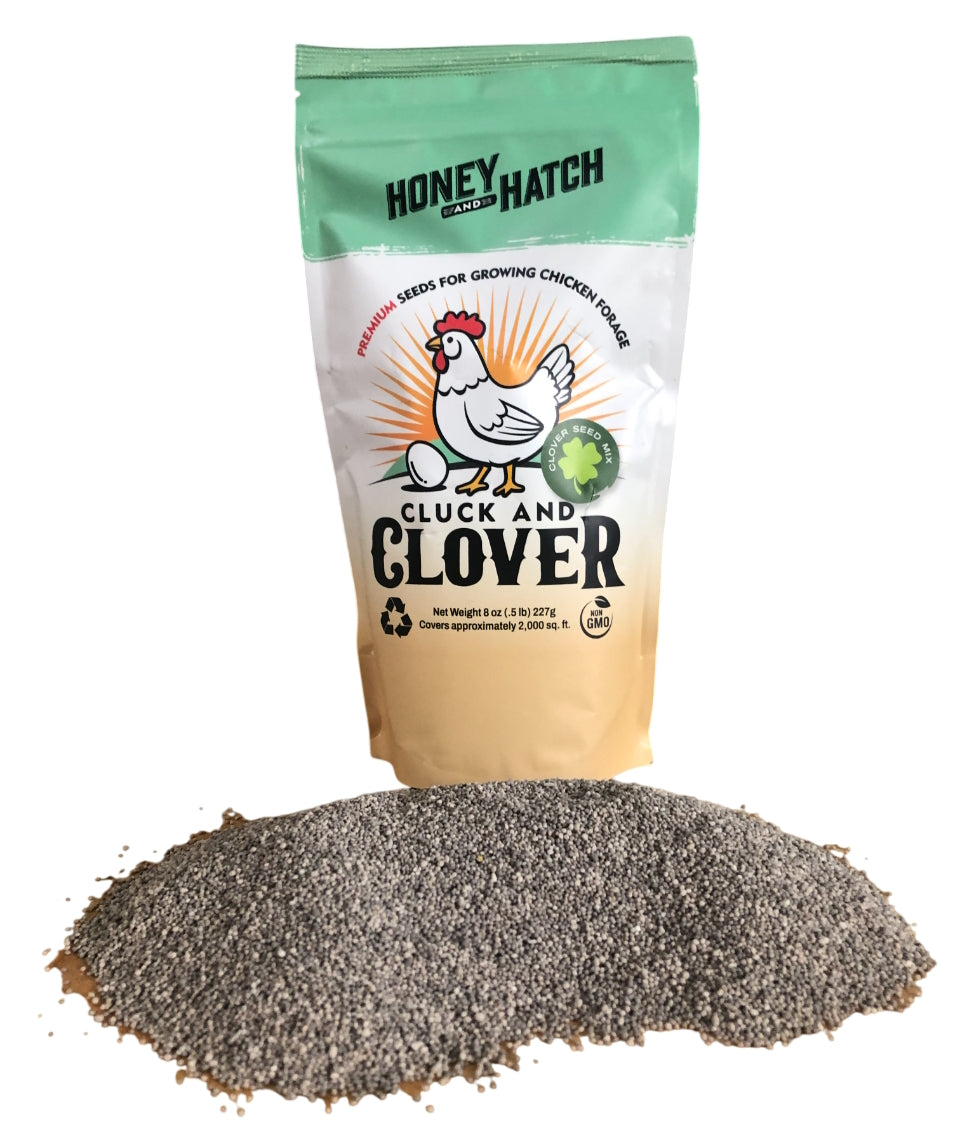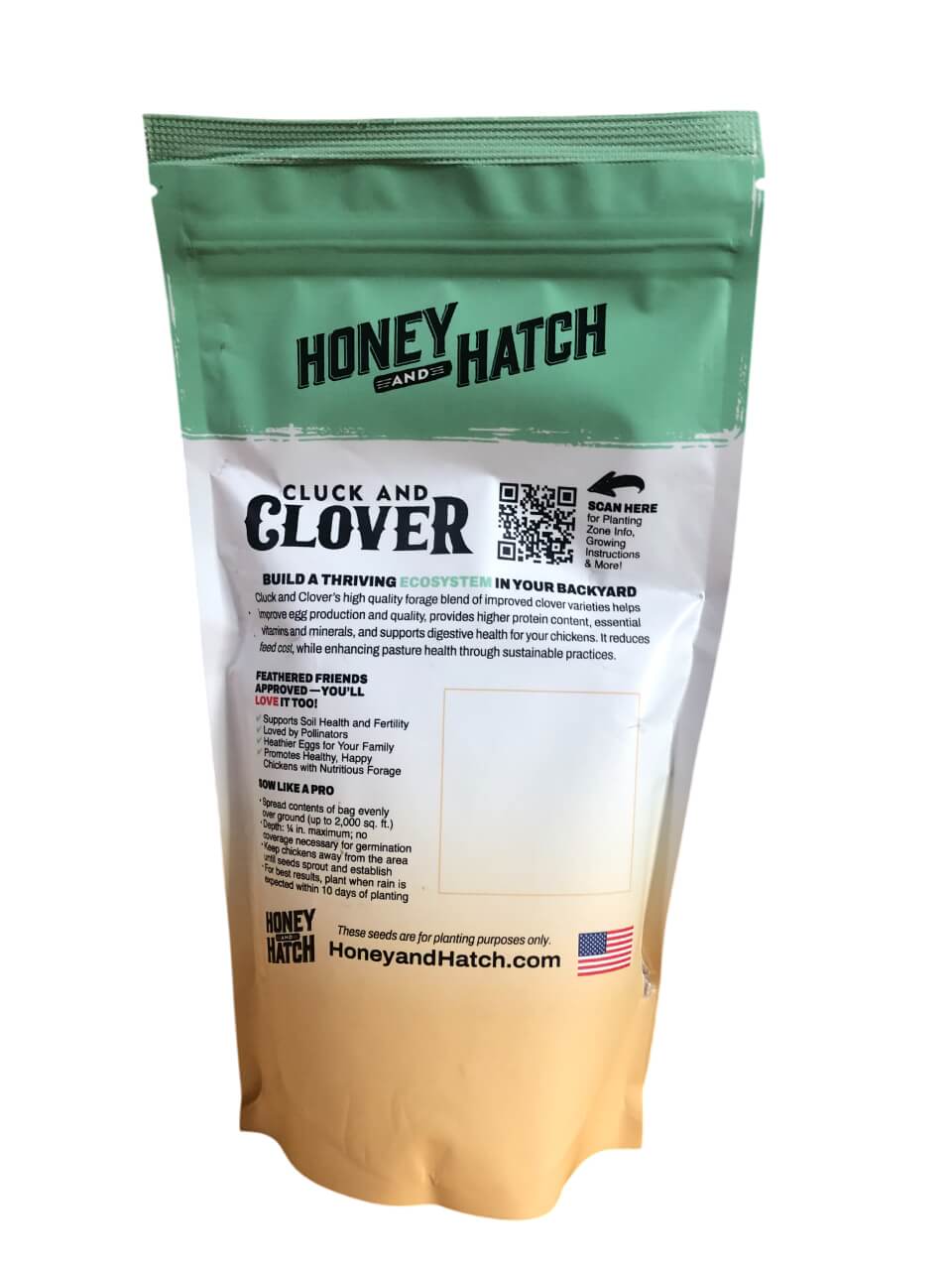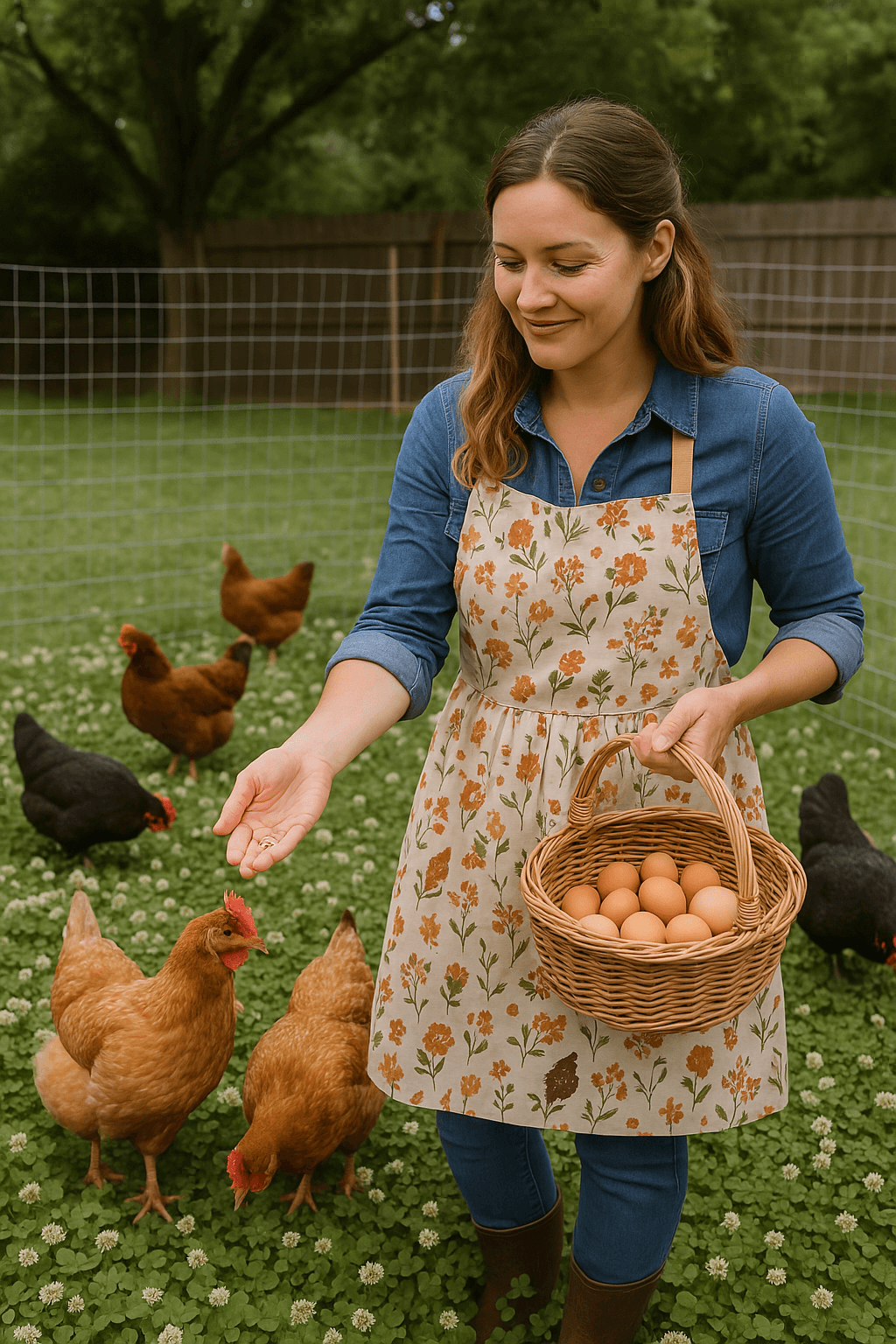
Determining Adequate Forage Space for Your Chicken Flock
Share
- By Tiffany Jenkins, Founder, Honey & Hatch
If you're planning to raise chickens on pasture or in a backyard run, understanding how much forage space your flock needs is essential. The goal is to give your birds access to natural vegetation while maintaining a healthy, sustainable environment.
Average Backyard Flock Size
Surveys by the USDA’s Animal and Plant Health Inspection Service (APHIS), the University of Maryland Extension, and poultry industry groups show that most backyard flocks are relatively small:
- USDA APHIS (2012): The most common backyard flock size was 6–10 birds.
- University of Maryland Extension (2019): Average of 8 birds per household, ranging from 2 to 25.
-
Why?
- Many city and suburban ordinances limit backyard flocks to 4–10 hens.
- Most families keep enough hens to supply their household with fresh eggs (4–6 hens = ~1 dozen eggs/week).
- Backyard chicken keeping emphasizes care and sustainability, not production scale.
When considering the type of location, the range of flocks sizes vary slightly.
|
Location |
Typical Flock Size |
|
Urban |
4–6 birds |
|
Suburban |
6–10 birds |
|
Rural (non-commercial) |
10–20 birds |
How Much Forage Space Does a Chicken Need?
To maintain healthy vegetation and allow for regrowth, space requirements depend heavily on whether the area is rotated or stationary.
Rotational Grazing (Best Practice)
- Recommended: 50–100 sq ft per bird
- For 10 chickens: 500–1,000 sq ft total
- Why it works: Regularly moving the flock (using a chicken tractor or portable fencing) allows forage to regrow between grazings.
Permanent or Stationary Run
- Recommended: 150–250 sq ft per bird (minimum)
- For 10 chickens: 1,500–2,500 sq ft total
- Reality check: Even at this size, expect heavy wear. Chickens will scratch, trample, and overgraze faster than vegetation can recover.
|
Setup Type |
Per Bird |
Total for 10 Birds |
|
Rotational Grazing |
50–100 sq ft |
500–1,000 sq ft |
|
Stationary w/ Forage |
150–250 sq ft |
1,500–2,500 sq ft |
|
Stationary (bare dirt) |
10–20 sq ft |
100–200 sq ft |
Why These Ranges Vary
Several factors influence how much space your chickens need:
- Rotation Frequency: More frequent moves = less land needed.
- Forage Quality: Lush clover needs less space than sparse grass or dry soil.
- Climate: Wet, warm areas promote regrowth; dry or cold climates slow it down.
- Management Practices: Overseeding, mulching, and supplementation can help offset limited space.
Tips for Managing Stationary Runs
If you can’t rotate your flock, you’ll need to manage the land more intensively:
1. Overseed Frequently
- Reseed with clover and grasses throughout the year.
- Block off sections to give new growth time to establish.
2. Use Deep Litter or Mulch
- Lay wood chips, straw, or leaves to reduce mud and protect soil.
- Helps build compost over time and improves conditions for reseeding.
3. Supplement with Cut Greens
- Toss in fresh clover, weeds, or vegetable scraps from other areas.
- Provides nutrition and behavioral enrichment even if pasture is bare.
Note: Forage vegetation cannot sustain itself long-term in stationary runs under ~150 sq ft per bird. Below this threshold, plan for bare dirt and manage accordingly.
Bottom Line
If you want to maintain forage for your chickens:
- Rotate whenever possible — it's more sustainable and healthier for both your birds and your land.
- If you're using a stationary run, maximize the space, reseed often, and supplement with outside greens.
- Regardless of setup, thoughtful management can support happier chickens and a more productive homestead.
Honey & Hatch's Cluck & Clover Seed Mix is packaged in sizes to cover 2,000 square feet ... ideally suited to typical non-production chicken flocks in urban, suburban and rural locations.
















